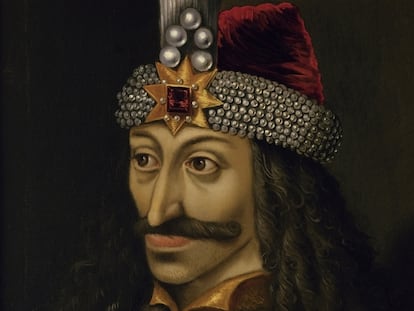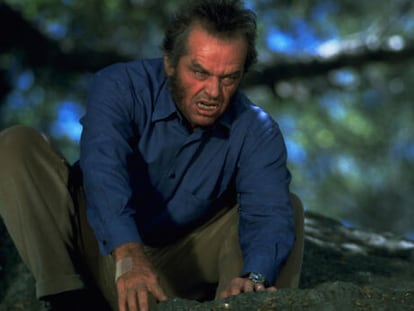The vampire hunter of our time is a fighting monk with silver tattoos who smokes powdered blood
Australian Jay Kristoff is the writer behind a monumental novel about the undead that at the same time pays tribute to and subverts the classics of the genre

“It is only the beginning!” declares Dr. Abraham Van Helsing upon seeing the unfortunate Lucy Westenra, Dracula’s victim, expire (for the first time). And, indeed, Bram Stoker’s novel was but the beginning of an extraordinary bloodstream of vampire stories that has now led to renowned Australian fantasy writer Jay Kristoff, author of The Nevernight Chronicle, who has brought a new twist to the world of the blood-sucking undead with Empire of the Vampire, a voluminous 752-page novel that is also the first installment of a trilogy and which skillfully and excitingly combines an epic-medieval fantasy scenario with the vampire myth. The book, already an international success, has created enormous expectation within the vampire fandom, and the truth is that, once the suspicions that a work of Proustian proportions such as this can arouse have been overcome (as well the teen lit design and art of the book), it is quite good.
Kristoff impresses with his intimidating Cimmerian look: 6′7″ tall, arms full of tattoos, long raven hair and a Lankhmar swordsman beard; add to that a black Bad Omen t-shirt and you’ll have the picture of the guy you’d want by your side with a crossbow during a wild night of slaying creatures at the Titty Twister bar from From Dusk Till Dawn.
Empire of the Vampire is presented as the long interrogation of a captured veteran vampire hunter – the feared chevalier Gabriel, a member of a powerful order of warrior monks known as the Silversaints – by a vampire who is a high-ranking “coldblood” that acts as the vampire empress’s chronicler.
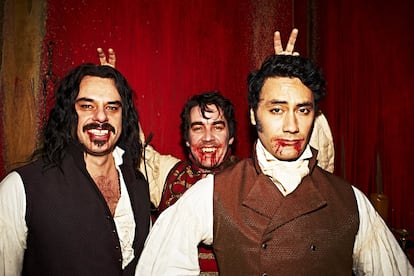
Numerous influences can be found in Kristoff’s novel, such as that of the Geralt of Rivia saga by Polish writer Andrzej Sapkowski (which was turned into the series The Witcher). Also, Interview with the Vampire, by Anne Rice, The Name of the Wind, by Patrick Rothfuss, and Blood Song, by Anthony Ryan. Of course, he says, he has been influenced by many more works; after all, he grew up reading vampire books. He declares himself a fan of Stephen King’s Salem’s Lot – 35 years after having read it for the first time, there are passages that he still can’t forget. In fact, there is a scene in Empire of the Vampire that is a homage to a moment in the novel in which the vampire snatches the crucifix – useless without faith behind it – from Father Callahan. Furthermore, Barlow, the vampire from King’s novel, was a model for Kristoff’s vampire Fabien Voss.
The inevitable influence of George R. R. Martin and J. R. R. Tolkien is also noticeable in the book. As for mixing vampires with medieval fantasy, it is something that hasn’t been done much, he says, alluding to the tendency to make vampires contemporaries of the moment the stories are being written. He, on the other hand, chose to insert his into epic fantasy as a villain, like what a dragon or a sorcerer would be in the genre. There is also an Arthurian influence, as well as a motley group with a male warrior, a female warrior, a thief and a sorcerer, and they meet in a tavern before setting out on a Dungeons & Dragons-style quest. However, he explores that theme in order to deconstruct it; he is interested in those literary topics, but to be iconoclastic with them. Empire of the Vampire is full of manipulated but recognizable tropes.
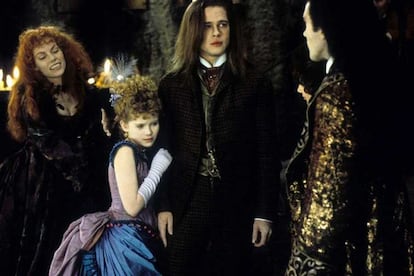
Ashdrinker, the talking sword, evokes that of Michael Moorcock’s Elric of Melniboné. Here, Kristoff turns it into the conscience of the hero, albeit a broken one; a sort of deconstructed and unreliable Jiminy Cricket that has become a favorite character for many readers. The author explains that his ideas come to him from mythology and from the writers who before him (like Moorcock) dove into the ancient myths in order to extract material for their novels. It is inevitable, he points out: they drew from those traditional sources and he is connected to them, and through them. Everything comes from the same sources, the myths of antiquity. The first part of the novel is fairly classic, when Gabriel explains his youth: he is a traditional hero, quite Campbellian, with a prodigious birth, a secret, a few tests and an initiation. However, he later becomes cynical and faithless, and the reader can’t help but wonder: whatever happened to the young idealist? Kristoff was very interested in that hidden side.
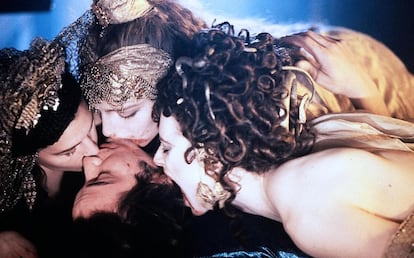
A new kind of vampire slayer
The vampire always has a powerful sexual charge, and this novel includes some risqué scenes that contradict the argument of it being for all audiences. The writer, however, has no doubt that teenagers today are prepared for everything; even a scene about the risks a girl faces when she allows a vampire to perform oral sex on her while on her period. To him, there was no way around it – not exploring that situation would have been cowardly, he points out. In any case, he elaborates, Empire of the Vampire is an adult novel in which there are corpses, putrefaction, violence, mutilations and addiction. It is not for children.
Among the most notable innovations (like the aegis, the silver tattoos of the vampire slayers, or seeing a female vampire turn into a cloud of red moths) there is the image of half-vampire knights like Gabriel relying on the sanctus, powdered vampire blood that they smoke in a pipe as if it was crack, which gives them extra strength. The idea came from the World War II fighters who were given speed, methamphetamine, to enhance their performance in combat.
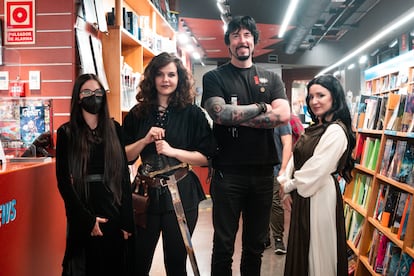
In Gabriel we find a new vampire slayer, part of a lineage that goes from Van Helsing to Blade, passing through Ben Mears and his companions – not forgetting Buffy and Lincoln, the axe-wielding vampire hunter (which, incidentally, Kristoff also resembles). The vampire slayer, explains Kristoff, is the embodiment of good triumphing over evil. Sometimes he is absent from some great of the vampire stories, like in Interview with the Vampire, and sometimes, perhaps more interesting, he fights the darkness within himself, as in the case of Gabriel. The author of Empire of the Vampire is partial to exploring that inner darkness.
So, does he relate more to the vampire, or to the vampire slayer? Kristoff’s answer is swift and categorical: without a doubt, the vampire.
Sign up for our weekly newsletter to get more English-language news coverage from EL PAÍS USA Edition
Tu suscripción se está usando en otro dispositivo
¿Quieres añadir otro usuario a tu suscripción?
Si continúas leyendo en este dispositivo, no se podrá leer en el otro.
FlechaTu suscripción se está usando en otro dispositivo y solo puedes acceder a EL PAÍS desde un dispositivo a la vez.
Si quieres compartir tu cuenta, cambia tu suscripción a la modalidad Premium, así podrás añadir otro usuario. Cada uno accederá con su propia cuenta de email, lo que os permitirá personalizar vuestra experiencia en EL PAÍS.
¿Tienes una suscripción de empresa? Accede aquí para contratar más cuentas.
En el caso de no saber quién está usando tu cuenta, te recomendamos cambiar tu contraseña aquí.
Si decides continuar compartiendo tu cuenta, este mensaje se mostrará en tu dispositivo y en el de la otra persona que está usando tu cuenta de forma indefinida, afectando a tu experiencia de lectura. Puedes consultar aquí los términos y condiciones de la suscripción digital.
More information
Archived In
Últimas noticias
There is as much life left to discover on planet Earth as that which is already known
Dozens presumed dead, around 100 injured in fire at Swiss Alps bar during New Year’s celebration
Is porn for women different from conventional porn? We spoke to those who make it
Cartagena de Indias is sinking: What can the city do to mitigate it?
Most viewed
- Reinhard Genzel, Nobel laureate in physics: ‘One-minute videos will never give you the truth’
- Sinaloa Cartel war is taking its toll on Los Chapitos
- David King, chemist: ‘There are scientists studying how to cool the planet; nobody should stop these experiments from happening’
- Oona Chaplin: ‘I told James Cameron that I was living in a treehouse and starting a permaculture project with a friend’
- The Interoceanic Train, the Mexican alternative to the Panama Canal
